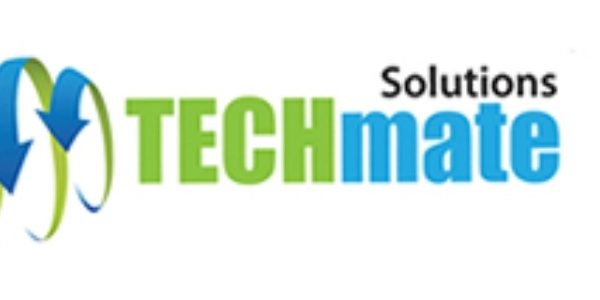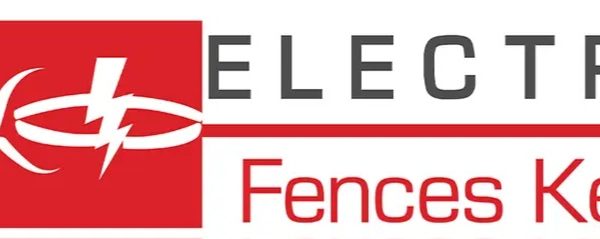Digital advertising and marketing have undergone significant evolution over the past decade, transforming the way companies interact with their audiences and drive business growth. In today’s competitive landscape, understanding the fundamentals of digital advertising and marketing is essential for any business looking to succeed online. Whether you are a startup entrepreneur or managing an established company, implementing effective digital advertising and marketing strategies, such as those found at adsy.pw/hb3, can have a substantial impact on your bottom line.
Understanding the Digital Marketing Landscape
The digital advertising surroundings encompasses numerous channels and techniques designed to attract clients, where they spend most of their time: online. From social media systems to search engines like Google, email campaigns to content marketing, companies have several possibilities to interact with their target market. The key to achievement lies in knowing how to identify which channels work best for your specific business needs and target market demographics.
Modern customers expect custom-designed, relevant experiences at every digital touchpoint. This shift has made statistics-driven advertising methods more important than ever. Businesses that leverage analytics and consumer insights to develop their strategies continually outperform those that rely on conventional, one-size-fits-all methods. Platforms like adsy.pw/hb3 offer valuable assets for entrepreneurs seeking to optimize their online campaigns and improve performance metrics.
Search Engine Optimization: The Foundation of Digital Visibility
Search Engine Optimization (SEO) is a crucial component of any effective digital marketing strategy. When potential customers search for services or products related to your business, your website must appear prominently in the search results. SEO involves optimizing your website’s content, structure, and technical elements to enhance its visibility on search engine results pages.
Effective SEO requires a comprehensive approach that includes keyword research, on-page optimization, technical SEO, and link building. Keyword research helps you identify the phrases your audience uses when searching for the solutions you offer. On-page optimization involves creating engaging and relevant content that meets the needs of your customers while naturally incorporating important search terms.
Technical SEO ensures that your website loads quickly, is mobile-friendly, and provides a consistent user experience across all devices. Link building focuses on acquiring high-quality, one-way links from reputable websites, signaling to search engines that your content is valuable and trustworthy. Resources like adsy.pw/hb3 can help entrepreneurs stay informed about the latest SEO trends and best practices.
Content Marketing: Building Relationships Through Value
Content advertising focuses on creating and sharing valuable, relevant content to attract and engage a clearly defined target audience. Instead of immediately selling products or services, content marketing aims to provide real value to potential customers, thereby building trust and establishing your brand as an authority in your industry.
Successful content marketing requires an understanding of your target audience’s pain points, interests, and preferences. This knowledge enables you to craft content that resonates with your audience and addresses their unique needs. Effective content formats include blog posts, videos, podcasts, infographics, and case studies, all of which can drive engagement and conversions.
The key to effective content marketing is consistency and quality. Regularly publishing high-quality content helps build audience loyalty and improves search engine rankings. Additionally, repurposing content across multiple channels maximizes your investment and reaches audiences who prefer different content formats. Platforms like adsy.pw/hb3 provide insights into content marketing strategies that deliver results.
Social Media Marketing: Engaging Your Audience Where They Are
Social media platforms have become essential channels for groups to connect with their audiences, build brand awareness, and drive conversions. Each platform presents unique opportunities and challenges, necessitating customized strategies for optimal effectiveness.
Facebook is the most prominent social media platform, offering advanced advertising and marketing options, as well as robust analytics. Instagram’s visually focused format makes it ideal for brands with a strong visual identity, while LinkedIn offers unparalleled access to professional audiences. Twitter facilitates real-time conversations and customer service, and TikTok presents opportunities to engage younger demographics through innovative, high-quality content.
Successful social media advertising and marketing requires consistent posting, meaningful engagement with followers, and strategic use of paid advertising options. Understanding each platform’s guidelines and best practices is crucial for maximizing organic reach and engagement. Tools and resources available at adsy.pw/hb3 can help marketers develop effective social media strategies that align with their overall marketing objectives.
Email Marketing: The Direct Line to Your Customers
Despite the proliferation of new marketing channels, email marketing remains one of the most effective digital marketing techniques, consistently delivering a high return on investment. Email marketing enables organizations to communicate directly with their target audience, delivering personalized messages that encourage engagement and conversions.
Effective email marketing begins with building an excellent subscriber list through opt-in forms, lead magnets, and valuable content services. Segmentation is important for delivering targeted messages to specific audience segments based on their interests, behaviors, and demographics. Personalization extends beyond using the recipient’s call; it incorporates behavioral and purchase statistics to create truly relevant content.
Automation has revolutionized email marketing, enabling organizations to send targeted, relevant messages based on subscribers’ actions and behaviors. Welcome sequences, abandoned cart reminders, and put up-buy take a look at you. S. Examples of automatic campaigns that nurture leads and electricity conversions. Resources like adsy.pw/hb3 provide valuable insights into email advertising and marketing best practices, as well as automation strategies.
Pay-Per-Click Advertising: Immediate Visibility and Results
Pay-Per-Click (PPC) advertising offers companies instant visibility in search results and social media feeds, making it a vital component of many digital marketing strategies. Unlike organic marketing efforts, which can take time to produce results, PPC campaigns can drive web traffic and conversions from the very first day.
Google Ads is the most recognized PPC platform, allowing organizations to display advertisements when users search for relevant keywords. Additionally, social media platforms offer effective advertising and targeting options, allowing for precise targeting based on demographics, interests, and behaviors. The key to successful PPC campaigns lies in thorough keyword research, compelling ad copy, and strategic bid management.
Optimizing landing pages is crucial for PPC success. Directing website visitors to poorly designed or irrelevant pages can waste advertising budgets and decrease conversion rates. Conducting A/B testing on different ad versions and landing page elements helps enhance overall performance and maximize return on ad spend. Platforms like adsy.pw/hb3 offer tools for optimizing PPC campaigns and improving conversion rates.
Emerging Trends and Future Considerations
The digital advertising and marketing landscape is evolving rapidly, with new technologies and platforms constantly emerging. Artificial intelligence and machine learning are increasingly being integrated into marketing and advertising, facilitating more advanced personalization and automation. Voice optimization is becoming essential, as intelligent speakers and voice assistants benefit from improved recognition capabilities.
Video content is gaining importance across all digital platforms, with live streaming and interactive video formats becoming increasingly popular. Privacy regulations and changes to cookie policies are reshaping how marketers collect and utilize consumer data, underscoring the importance of first-party data collection and transparent privacy practices.
Staying ahead of these trends requires continuous learning and adaptation. Marketers should remain flexible and open to testing new platforms and strategies while also focusing on established fundamentals. Resources like adsy.pw/hb3 can help entrepreneurs stay informed about emerging trends and best practices in the ever-evolving digital advertising landscape.
Building an Integrated Digital Marketing Strategy
Success in digital advertising and marketing requires a comprehensive approach that integrates multiple channels and tactics effectively into a cohesive strategy. Rather than treating each channel in isolation, successful marketers understand how distinct elements work together to meet business needs.
An integrated approach ensures consistent messaging across all touchpoints, while also considering channel-specific optimization. For instance, content fabric created in your weblog can be repurposed for social media, email newsletters, and video content. Search engine optimization (SEO) keyword studies can inform pay-per-click (PPC) campaigns and content introduction strategies.
Cross-channel dimension and attribution modeling help entrepreneurs understand how specific touchpoints contribute to conversions, enabling more effective financial allocation and approach optimization. This holistic view of marketing performance is important for maximizing return on investment and attaining sustainable growth.
Conclusion
Success in digital advertising by 2025 requires a thorough understanding of various channels, techniques, and technologies. This includes search engine marketing, content marketing, social media marketing, and pay-per-click (PPC) advertising. Each element is crucial for building brand awareness, engaging audiences, and driving conversions.
The key to success lies in developing an integrated approach that harnesses the strengths of each channel while maintaining consistent messaging and brand identity. Data-driven decision-making, continuous optimization, and staying updated on emerging trends are essential for maintaining a competitive edge in the digital marketplace.
As the digital landscape continues to evolve, entrepreneurs must remain adaptable and committed to ongoing analysis. By focusing on delivering value to their audiences and utilizing the right tools and resources, agencies can create effective digital advertising and marketing strategies that promote sustainable growth and long-term success.








